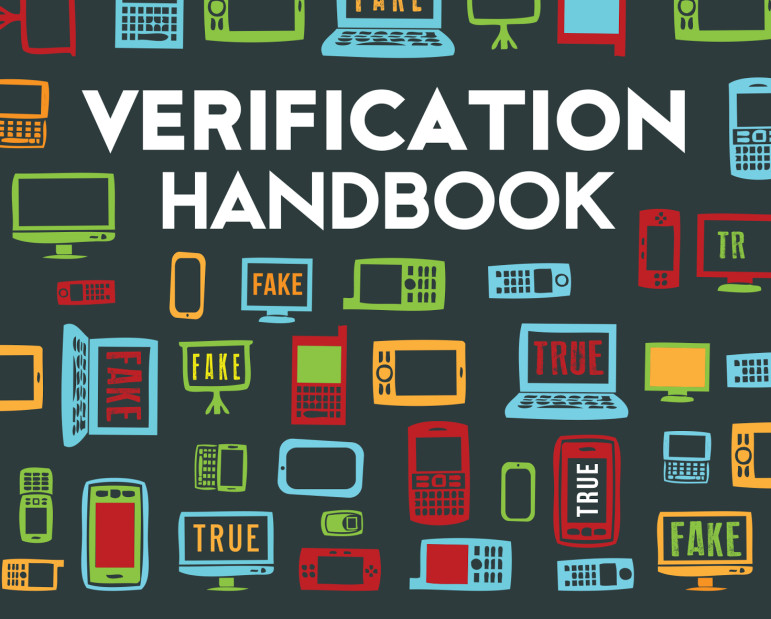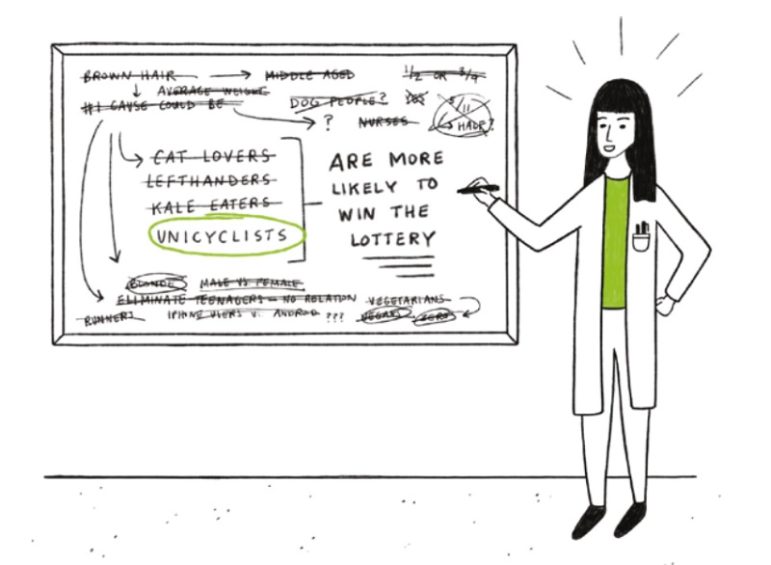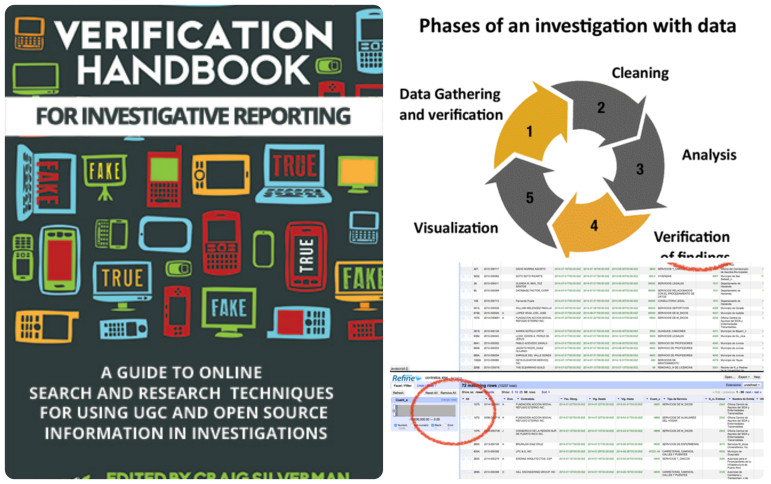

A Guide to Verifying Digital Content in Emergencies
Editor’s Note: The Verification Handbook is a new resource for journalists and aid responders, with step-by-step guidelines for using information generated by the public. Although targeted for use during emergencies, the handbook provides useful tips for verifying crowd-sourced information in general. Thanks to the European Journalism Centre, which developed the handbook, for allowing GIJN to publish this excerpt.
 Verification Fundamentals
Verification Fundamentals
- Put a plan and procedures in place for verification before disasters and breaking news occur.
- Verification is a process. The path to verification can vary with each fact.
- Verify the source and the content they provide.
- Never parrot or trust sources whether they are witnesses, victims or authorities. Firsthand accounts can be inaccurate or manipulative, fueled by emotion or shaped by faulty memory or limited perspective.
- Challenge the sources by asking “How do you know that?” and “How else do you know that?”
- Triangulate what they provide with other credible sources including documentations such as photos and audio/video recordings.
- Ask yourself, “Do I know enough to verify?” Are you knowledgeable enough about the topics that require understanding of cultural, ethnical, religious complexities?
- Collaborate with team members and experts; don’t go it alone.
Verifying user-generated content (UGC)
- Start from the assumption that the content is inaccurate or been scraped, sliced, diced, duplicated and/or reposted with different context.
- Follow these steps when verifying UGC:
- Identify and verify the original source and the content (including location, date and approximate time).
- Triangulate and challenge the source.
- Obtain permission from the author/originator to use the content (photos, videos, audio).
- Always gather information about the uploaders, and verify as much as possible before contacting and asking them directly whether they are indeed victims, witnesses or the creator of the content.
1. Identify and verify the original source and the content (including location, date and approximate time).
Provenance
The first step of UGC verification is to identify the original content, be it a tweet, image, video, text message, etc. Some questions to start with:
- Can you find the same or similar posts/content elsewhere online?
- When was the first version of it uploaded/filmed/shared?
- Can you identify the location? Was the UGC geotagged?
- Are any websites linked from the content?
- Can you identify the person who shared/uploaded the UGC, and contact them for more information? (See the “Source” section below.)
When dealing with images and videos, use Google Image Search or TinEye to perform a reverse image/video thumbnail search. If several links to the same image pop up, click on “view other sizes” to find the highest resolution/size, which usually is the original image.
For verifying provenance of images:
- Use Google Image Search or TinEye to perform a reverse image search. If several links to the same image pop up, click on “view other sizes” to find the highest resolution/size which usually is the original image.
- Check to see if the image has any EXIF data (metadata). Use software like Photoshop or free tools such as Fotoforensics.com or Findexif.com to see information about the model of the camera, the timestamp of the image (caution: the data could default to the manufacturer’s settings), and the dimensions of the original image.
- Social networks like Twitter, Facebook and Instagram strip out most metadata. Flickr is an exception. Instead, try Geofeedia and Ban.jo to identify the GPS data from the mobile device that uploaded the image.
For verifying provenance of video:
- Use acronyms, place names and other pronouns for good keyword search on video sharing platforms such as YouTube, Vimeo and Youku.
- Use Google Translate when dealing with contents in a foreign language.
- Use the date filter to find the earliest videos matching the keywords.
- Use Google Image Search or TinEye to perform a reverse video thumbnail search.
Source
With the original content identified, gather information about the author/originator of the content. The goal is to confirm whether the person behind the account is a reliable source. Examine an uploader’s digital footprint by asking these questions:
- Can you confirm the identity of, and contact, the person?
- Are you familiar with this account? Has their content and reportage been reliable in the past?
- Check the history of the uploader on the social network:
- How active are they on the account? What do they talk about/share?
- What biographical information is evident on the account? Does it link anywhere else?
- What kind of content have they previously uploaded?
- Where is the uploader based, judging by the account history?
- Check who they are connected on the social network:
- Who are their friends and followers?
- Who are they following?
- Who do they interact with?
- Are they on anyone else’s lists?
- Try to find other accounts associated with the same name/username on other social networks in order to find more information:
- If you find a real name, use people search tools (Spokeo, White Pages, Pipl.com, WebMii) to find the person’s address, email and telephone number.
- Check other social networks, such as LinkedIn, to find out about the person’s professional background.
- Check if a Twitter or Facebook Verified account is actually verified by hovering over the blue check. If the account is verified by Twitter or Facebook, a popup will say “Verified Account” or “Verified Page.”
When dealing with images and videos, adopt the shooter’s perspective. (These questions also work when trying to verify textual information.) Ask yourself these questions about the source to check their credibility:
- Who are they?
- Where are they?
- When did they get there?
- What could they see (and what does their photo/video show)?
- Where do they stand?
- Why are they there?
Connect their activity to any other online accounts they maintain by asking these questions:
- Search Twitter or Facebook for the unique video code – are there affiliated accounts?
- Are there other accounts – Google Plus, a blog or website – listed on the video profile or otherwise affiliated with this uploader?
- What information do affiliated accounts give that indicate recent location, activity, reliability, bias or agenda?
- How long have these accounts been active? How active are they? (The longer and more active, the more reliable they probably are.)
- Who are the social media accounts connected with, and what does this tell us about the uploader?
- Can we find whois information for an affiliated website?
- Is the person listed in local phone directories, on Spokeo, Pipl.com or WebMii or on LinkedIn?
- Do their online social circles indicate they are close to this story/location?
Content
Date
Verify the date and approximate time, particularly when dealing with photos/videos:
- Check the weather information on the day and the location where the event happened. Is the weather condition the same from the (local) weather forecasts and other uploads from the same event? Use Wolfram Alpha to perform a search (e.g., “What was the weather in London, England, on January 20, 2014?”).
- Search news sources for reports about events on that day.
- Using video and image search (YouTube, Google, TinEye, etc.), see if any earlier pieces of content from the same event predate your example. (Be aware that YouTube date stamps using Pacific Standard Time from the moment the upload begins.)
- For images and video, look (and listen) for any identifying elements that indicate date/time, such as clocks, television screens, newspaper pages, etc.
Location
Another crucial aspect of verification is to identify the location of the content:
- Does the content include automated geolocation information? (Services such as Flickr, Picasa and Twitter offer the option of including location, though it is not foolproof.)
- Find reference points to compare with satellite imagery and geolocated photographs, such as:
- Signs/lettering on buildings, street signs, car registration plates, billboards, etc. Use Google Translate or free.orc.com for online translation.
- Distinctive streetscape/landscape such as mountain range, line of trees, cliffs, rivers, etc.
- Landmarks and buildings such as churches, minarets, stadiums, bridges, etc.
- Use Google Street View or Google Maps’ “Photos” function to check if geolocated photographs match the image/video location.
- Use Google Earth to examine older images/videos, as it provides a history of satellite images. Use Google Earth’s terrain view.
- Use Wikimapia, the crowdsourced version of Google Maps, to identify landmarks.
- Weather conditions such as sunlight or shadows to find approximate time of day. Use Wolfram Alpha to search weather reports at specific time and place.
- License/number plates on vehicles
- Clothing
For Videos:
- Examine the language(s) spoken in the video. Check if accents and dialects match up with the geographical location. Beware that Google Translate does not give correct translation for some languages. Ask those who speak the language for support.
- Are video descriptions consistent and mostly from a specific location?
- Are videos dated?
- If videos on the account use a logo, is this logo consistent across the videos? Does it match the avatar on the YouTube or Vimeo account?
- Does the uploader “scrape” videos from news organizations and other YouTube accounts, or do they upload solely user-generated content?
- Does the uploader write in slang or dialect that is identifiable in the video’s narration?
- Are the videos on this account of a consistent quality? (On YouTube go to Settings and then Quality to determine the best quality available.)
- Do video descriptions have file extensions such as .AVI or .MP4 in the video title? This can indicate the video was uploaded directly from a device.
- Does the description of a YouTube video read: “Uploaded via YouTube Capture”? This may indicate the video was filmed on a smartphone.
2. Triangulate and challenge the source
Once you go through the above steps ask yourself:
- Do the images/videos/content make sense given the context in which it was shot/filmed?
- Does anything look out of place?
- Do any of the source’s details or answers to my questions not add up?
- Did media outlets or organizations distribute similar images/videos?
- Is there anything on Snopes related to this?
- Does anything feel off, or too good to be true?
When getting in touch with the source, ask direct questions and cross-reference answers to information you get through your own research. Make sure that their answers match up with your findings.
For images:
- When questioning, reflect what you know from the EXIF data and/or geolocation information from tools like Google Street View and Google Maps.
- Ask them to send in other additional images that were shot before and after the image in question.
- If the image is from a dangerous location, always check if the person is safe to speak to you.
For videos:
- If you have doubts over construction of the video, use editing software such as VLC media player (free), Avidemux (free) or Vegas Pro (licensed) to split a video into its constituent frames.
3. Obtain permission from the author/originator to use the content
Copyright laws vary from country to country, and the terms of conditions differ from service to service. Obtaining permission to use images, video and other content is essential.
When seeking permission:
- Be clear about which image/video you wish to use.
- Explain how it will be used.
- Clarify how the person wishes to be credited. Do they want to be credited with a real name, a username or anonymously?
- Consider any consequences of using the content and/or name of the person. Is it necessary to blur the faces for privacy and security reasons? Will the creator/uploader be put in danger if you credit them by real name?
Preparing for verification success in disaster and breaking news situations
Here are a few tips for creating a better verification process:
- Build and maintain a network of trusted sources
- Build a list of reliable sources that include both official and unofficial such as first responders, academic experts, NGOs, government offices, etc. Gather not only social media accounts but also phone numbers and emails in a shared database/spreadsheet.
- Create Twitter Lists that are organized in logical groups based on topics or geographical location. Find the reliable sources through Twitter advanced searches and by following specific hashtags. You can also use Facebook Interest Lists and Google Plus circles, subscribe to YouTube channels and build playlists.
- Never treat those you come across on social networks as just sources. Treat them like human beings and engage. They are your colleagues.
- In the crowd, there are reliable sources who developed, either professionally or non-professionally, expertise in a specific topic area. There are also sources in a specific physical location.
- Build trust by engaging on social networks and meeting people in person. Ask them to recommend and/or help you verify sources. By interacting with them, you will learn their strengths, weaknesses, biases and other factors.
- Identify the role you/your organization will play in the moment, and any possible disaster scenarios
- Identify your role in disaster communications.
- Determine how you should communicate effectively when an emergency occurs.
- Think about with whom you want to communicate, what are the useful information for these target group, what sort of language you should use to advise them.
- Structure your internal communication as fully as you structure your external one.
- Train, debrief and support staff and colleagues
- Establish the toolset, workflow, approvals and communication procedures to use in disaster situations.
- Provide situational/scenario training, especially for those living in the area where certain types of disasters are expected to happen.
- Give staff the ability to participate in disaster training programs offered by emergency services.
- Prepare scripts/messages that will be used in specific disaster situations.
- Plan regular check-ins with key sources to ensure their contact information is up-to-date.
- Debrief staff after coverage, and adjust your emergency plans and training to adapt to new learnings.
- Do not underestimate “trauma” and “stress” that results from reporting crises. Provide support where needed.
 Craig Silverman is founder and editor of Regret the Error, a Poynter Institute blog about media errors, accuracy, and verification. He serves as director of content for Spundge, a platform that enables professionals to grow and monetize their expertise through content. Silverman previously helped launch OpenFile, an online news startup that delivered local reporting in six Canadian cities. He is the author of Regret The Error: How Media Mistakes Pollute the Press and Imperil Free Speech. He tweets at @craigsilverman.
Craig Silverman is founder and editor of Regret the Error, a Poynter Institute blog about media errors, accuracy, and verification. He serves as director of content for Spundge, a platform that enables professionals to grow and monetize their expertise through content. Silverman previously helped launch OpenFile, an online news startup that delivered local reporting in six Canadian cities. He is the author of Regret The Error: How Media Mistakes Pollute the Press and Imperil Free Speech. He tweets at @craigsilverman.
 Rina Tsubaki leads and manages the Verification Handbook and Emergency Journalism initiatives at the European Journalism Centre in the Netherlands. Emergency Journalism brings together resources for media professionals reporting in and about volatile situations in the digital age, and Tsubaki has frequently spoken on these topics. In 2011 she was the lead contributor of the Internews Europe’s report on the role of communication during the March 2011 Japan quake. She tweets at @wildflyingpanda.
Rina Tsubaki leads and manages the Verification Handbook and Emergency Journalism initiatives at the European Journalism Centre in the Netherlands. Emergency Journalism brings together resources for media professionals reporting in and about volatile situations in the digital age, and Tsubaki has frequently spoken on these topics. In 2011 she was the lead contributor of the Internews Europe’s report on the role of communication during the March 2011 Japan quake. She tweets at @wildflyingpanda.









